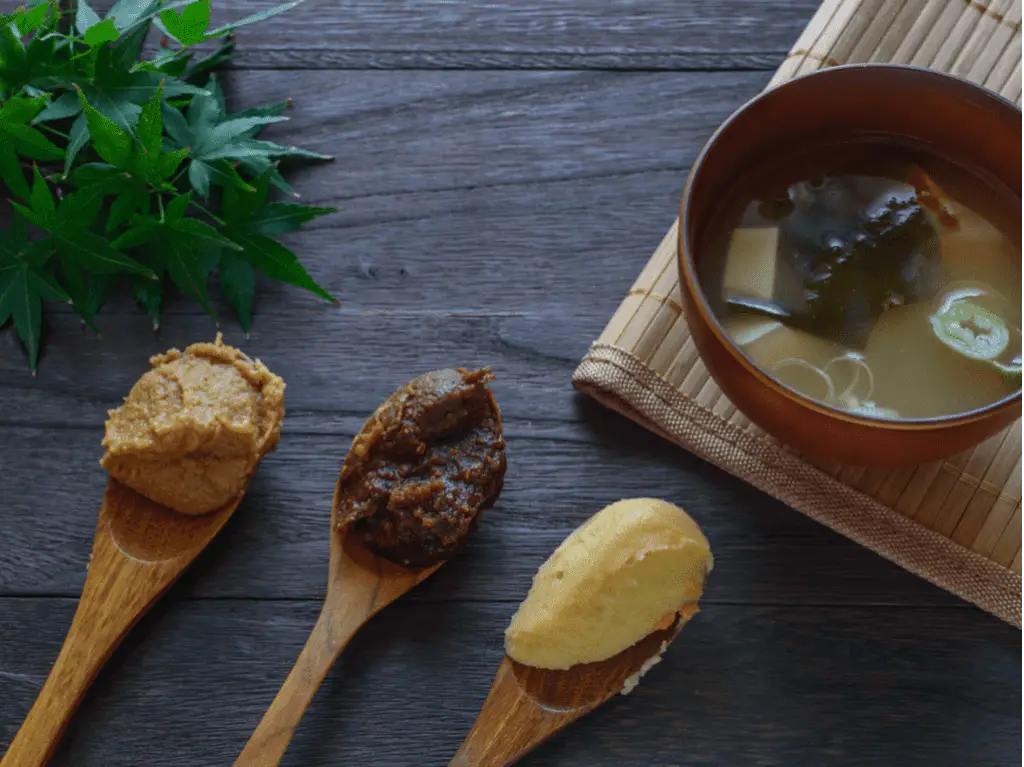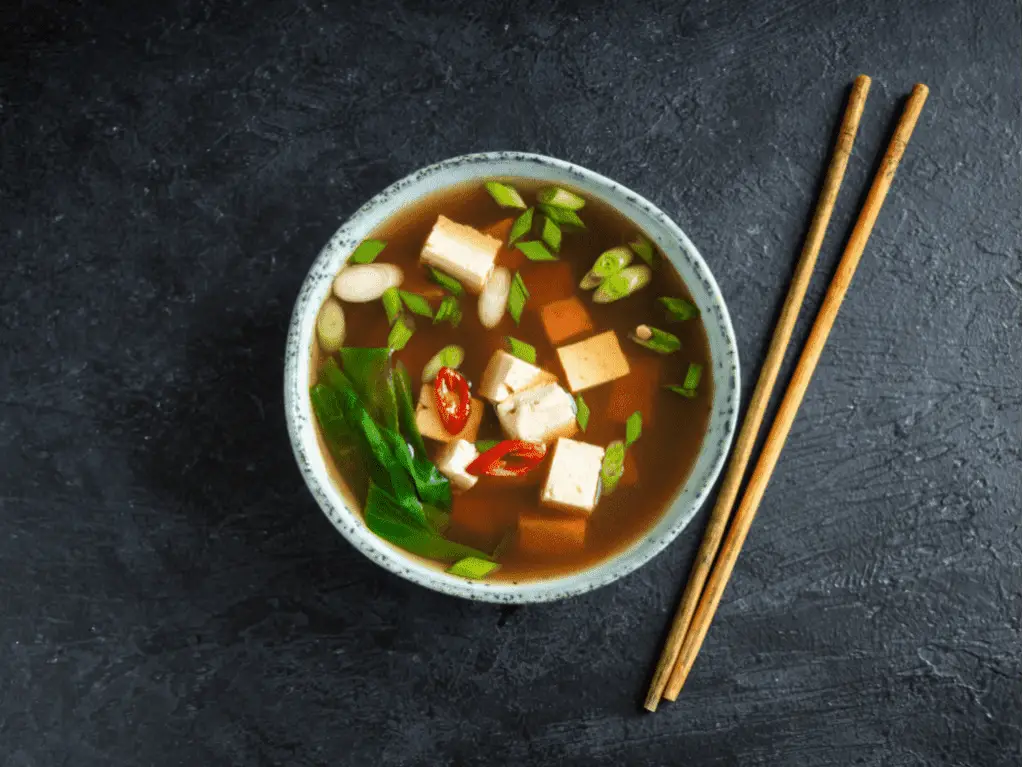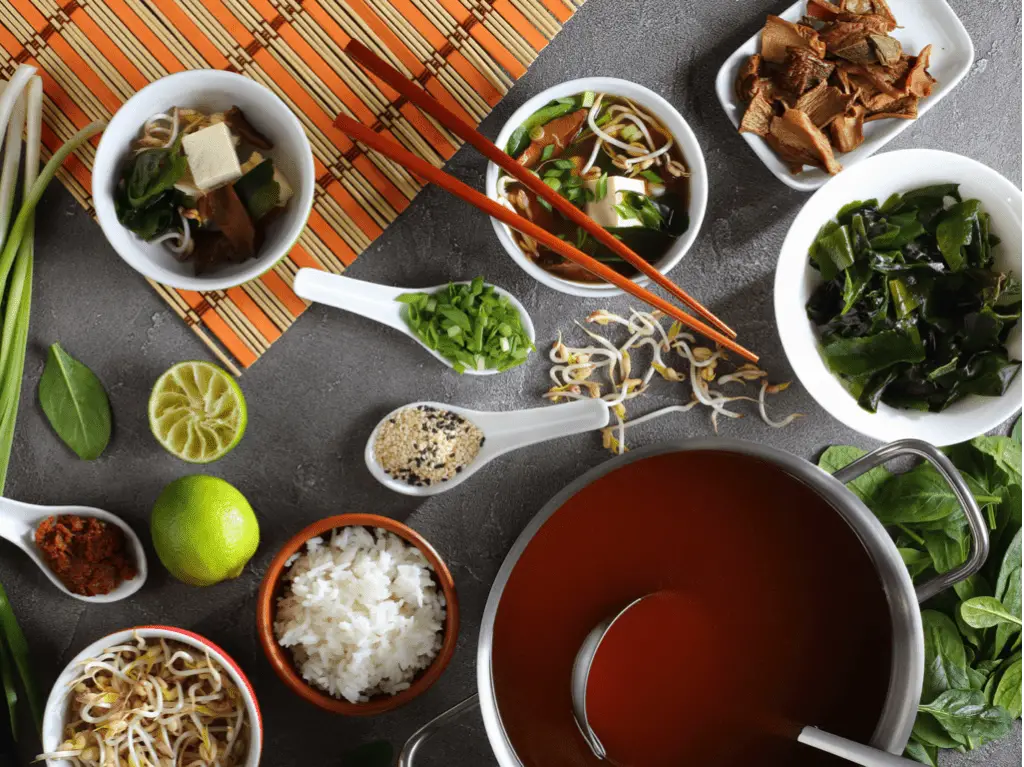One of the great things about Japanese food is that there’s so much rich, fascinating history in the food. It’s so much more intricate and complex than American cuisine. In this guide, I’m going to explore a standout in Japanese cuisine: miso soup. The question is whether or not miso soup is Japanese.
Miso Soup is indeed Japanese. The soup was invented more than 13,000 years ago in what is now Japan. In that time, miso has become more than just a soup, as it’s a critical seasoning in a lot of Japanese foods.


In this blog, I’ll talk about the origins of Miso soup in particular as well as miso as well as get into some of the health benefits of the food.
Is Miso Soup Japanese?
The interesting thing about the question, “Is Miso soup Japanese?” is that in other parts of the world asking it might be frowned upon. However, it can be easy to make mistakes like that when you’re so far removed both geographically and socially from the food’s origin.
Miso first came to Japan, it is believed, sometime during the 7th century from mainland China and the Korean peninsula. When it was first popularized during the Heian dynasty, it was a luxury item. Often, the wealthy were paid in Miso or it was bestowed as a gift.
It also wasn’t used as a seasoning back then. People usually licked it or spread it thickly. For a commoner to have gotten ahold of any would be next to impossible.
This is not uncommon in the history of foods that we consider regular grocery items today. Over the years, their rarity or value changes, especially as new ways to transport it developed. Pineapples, for instance, were also once luxury items in England. So much so that the elite would rent them out to carry with them at parties to signify their status.

When Buddhist monks came during the Kamakura period, their Suribachi mortars were ideal for finely grounding down the grain and dissolving it in water. Ever since, miso has become a very popular soup there. Miso soup became part of the standard diet of Samurai warriors at the time.
Menus for samurais were often intensely focused on health, making them very strict and limited. Soup was an ideal option. Time marched on and military diets became not that different from those of the commoners.
Over the years, we’ve managed to master the process of grounding and storing Miso properly. The broth that it’s usually made in, dashi stock, is composed of dried kelp, dried bonito flakes, dried anchovies and dried shiitake mushrooms that are boiled in water which is then drained through a strainer. You can purchase it or make it yourself.
It’s easy to make a delicious Miso soup at home if you purchase dashi stock and soybean paste at a grocery store.
Getting The Right Ingredients

Most Japanese markets have one, or you can order online. Some regular grocery stores carry it if they have a special aisle for foreign foods. As for the rest of the ingredients, they’re entirely up to you, though there are some that should be added before the dashi is boiling and some after. Here’s a list of ingredients that go before:
- Clams
- Carrot
- Daikon Radish
- Manila clams
- Pumpkin
- Turnip
- Onion
- Potato
The ingredients you should put in after are:
- Deep-fried tofu pouch
- Cabbage
- Egg
- Bean Sprouts
- Eggplant
- Mushrooms
- Onions
- Leeks
- Somen Noodles
- Okra
- Spinach
- Seaweed
Health Benefits of Miso Soup

Oftentimes, people turn to Asian cuisine for their health benefits. While it’s often more about how the food is prepared, such as the case with soba noodles, that determines its nutritional value, there are some foods that are just naturally better for you. Tofu, for instance, can be even healthier when it’s fermented.
As previously mentioned, Miso soup worked its way into the everyday Japanese people’s meals largely due to it being a military food, meant to be consumed for its health properties. There certainly are many benefits to eating Miso soup.
Helps Digestive System
The probiotics found in Miso can help maintain a healthy digestive system, which can be especially important as you get older.
Nutrient Source
Miso is packed with necessary minerals such as manganese, protein, copper, zinc and Vitamin K. Vitamin K is especially essential in blood clotting and maintaining a healthy liver.
Bone Health
In addition to the other nutrients and vitamins, Miso also contains calcium necessary to keep your bones healthy and fight off osteoporosis.
One of the great things about Miso soup is that it can be treated as an appetizer for larger delights such as gyoza or some sort of sashimi, or it can be enjoyed on its own.
As rich as this history of Miso is, perhaps the most interesting thing is the taste. It’s both foreign and familiar, subtle and intense. It’s a great example of what we look for in Japanese food.